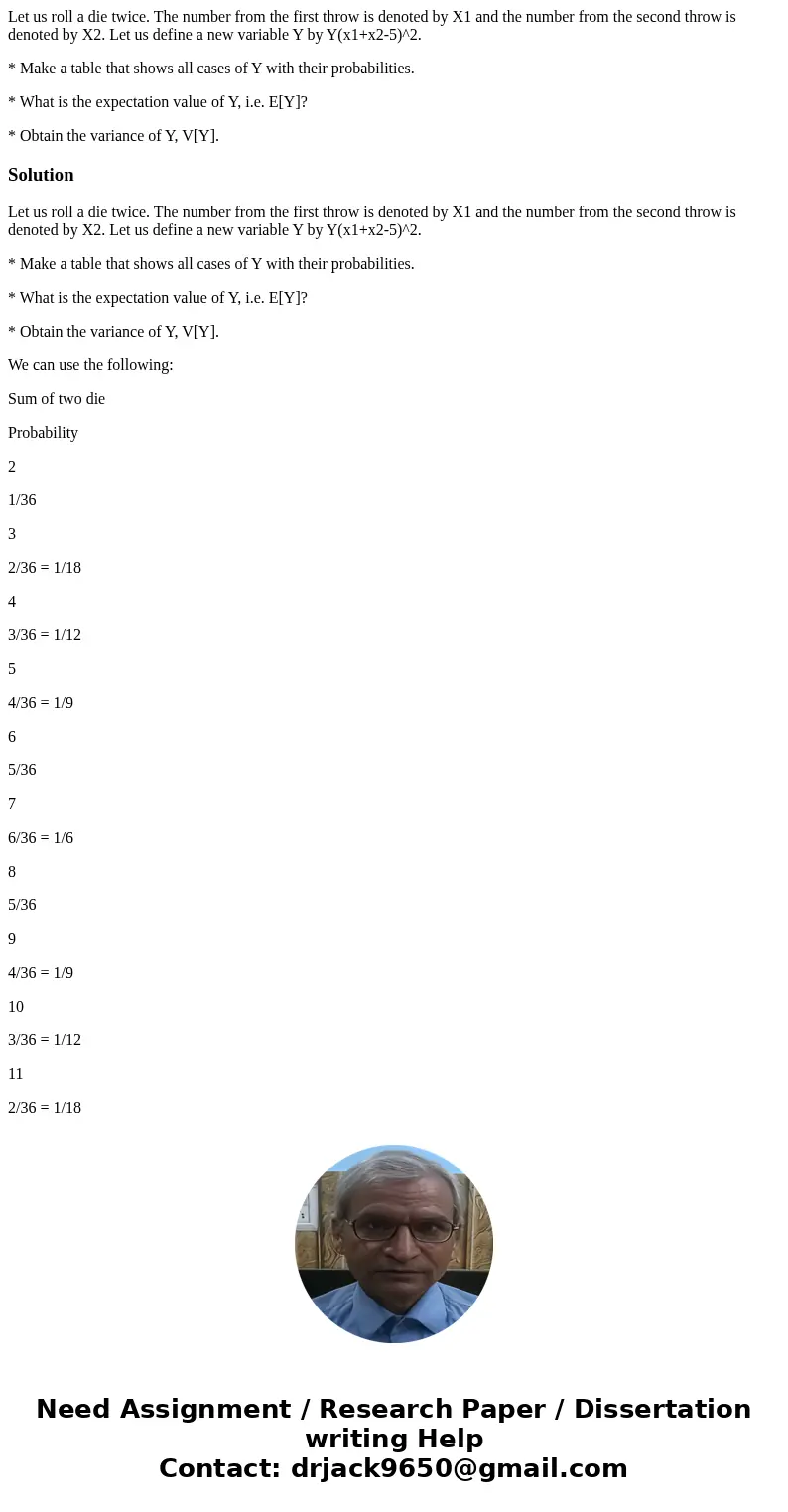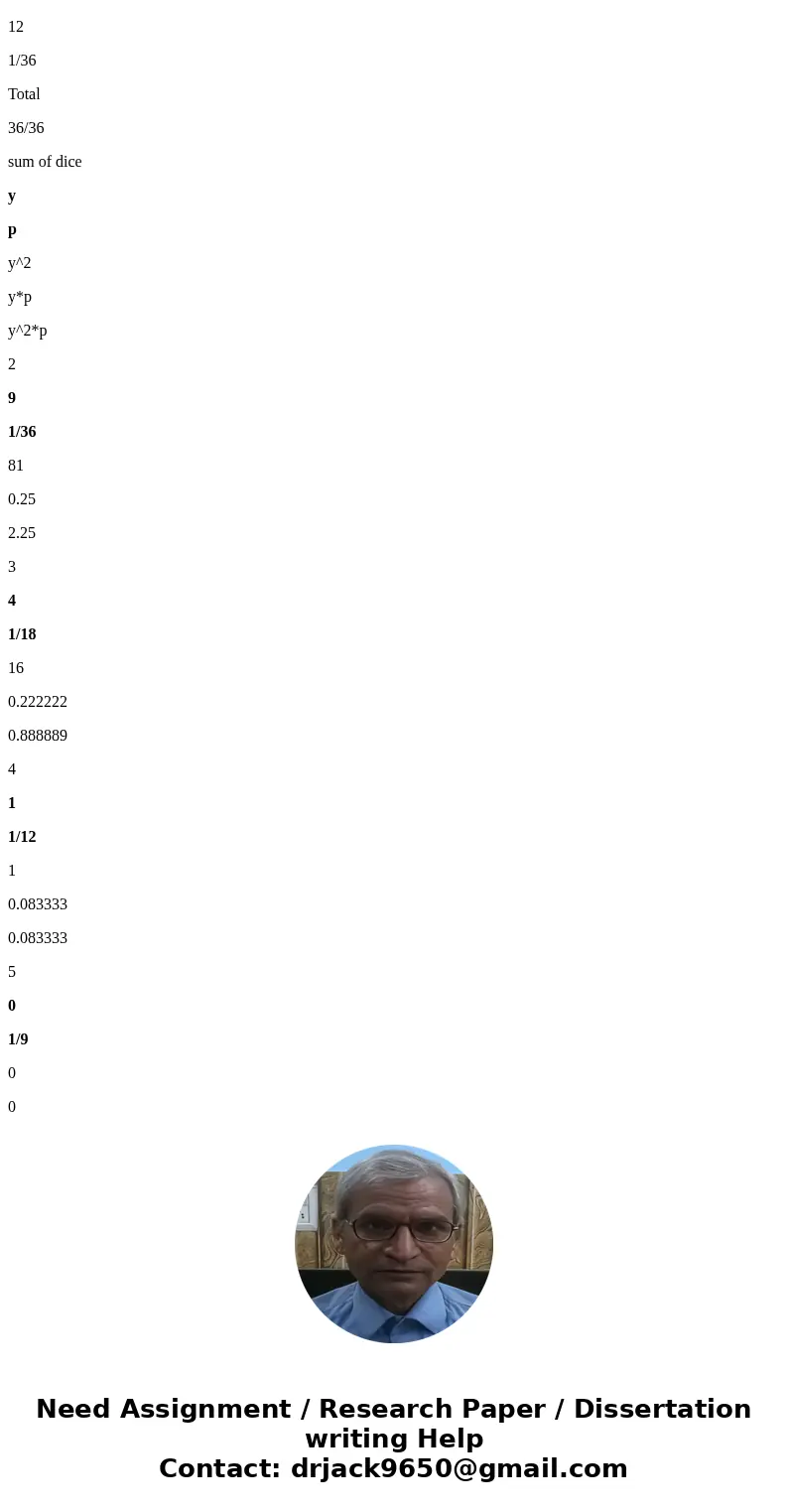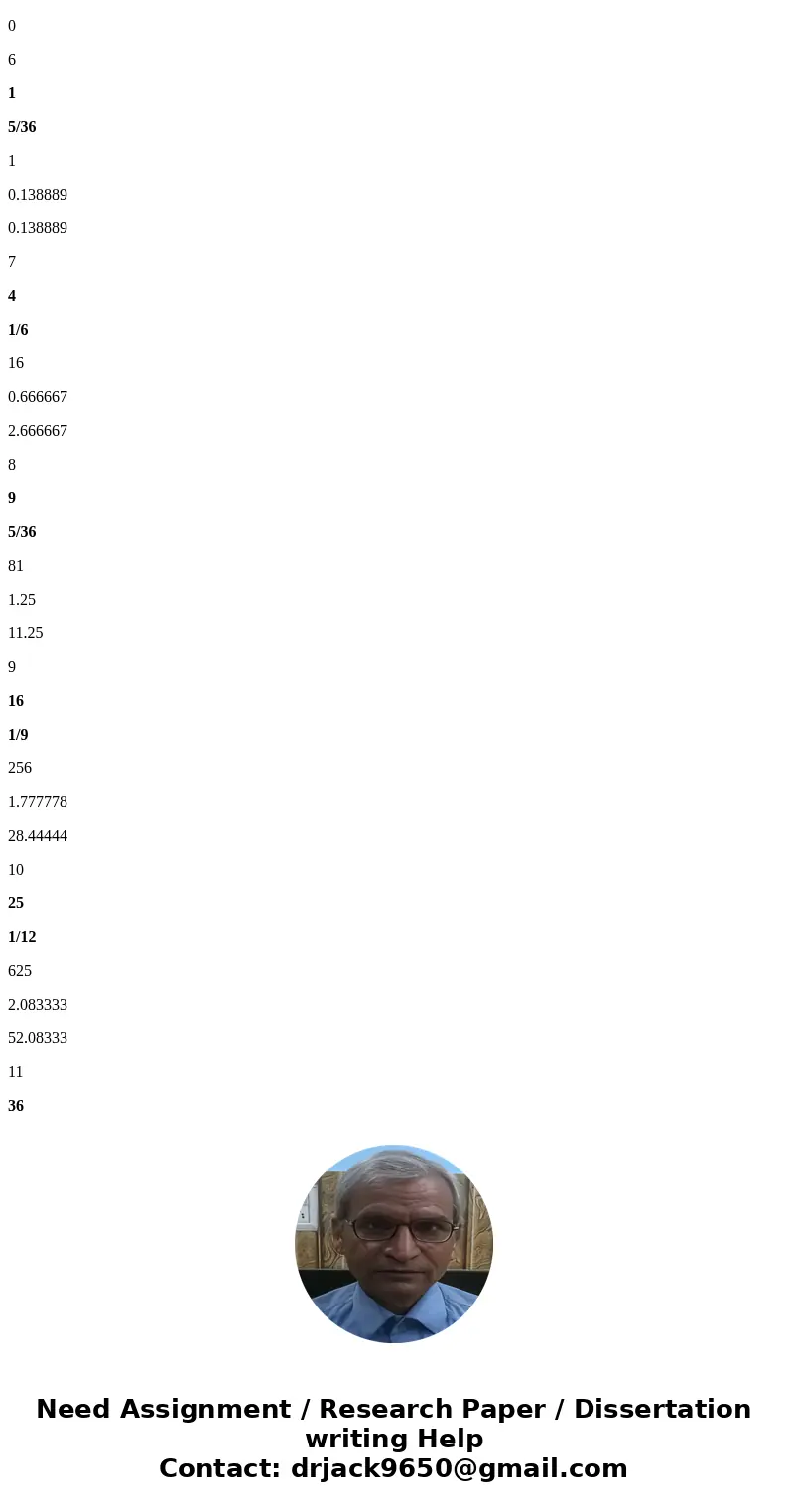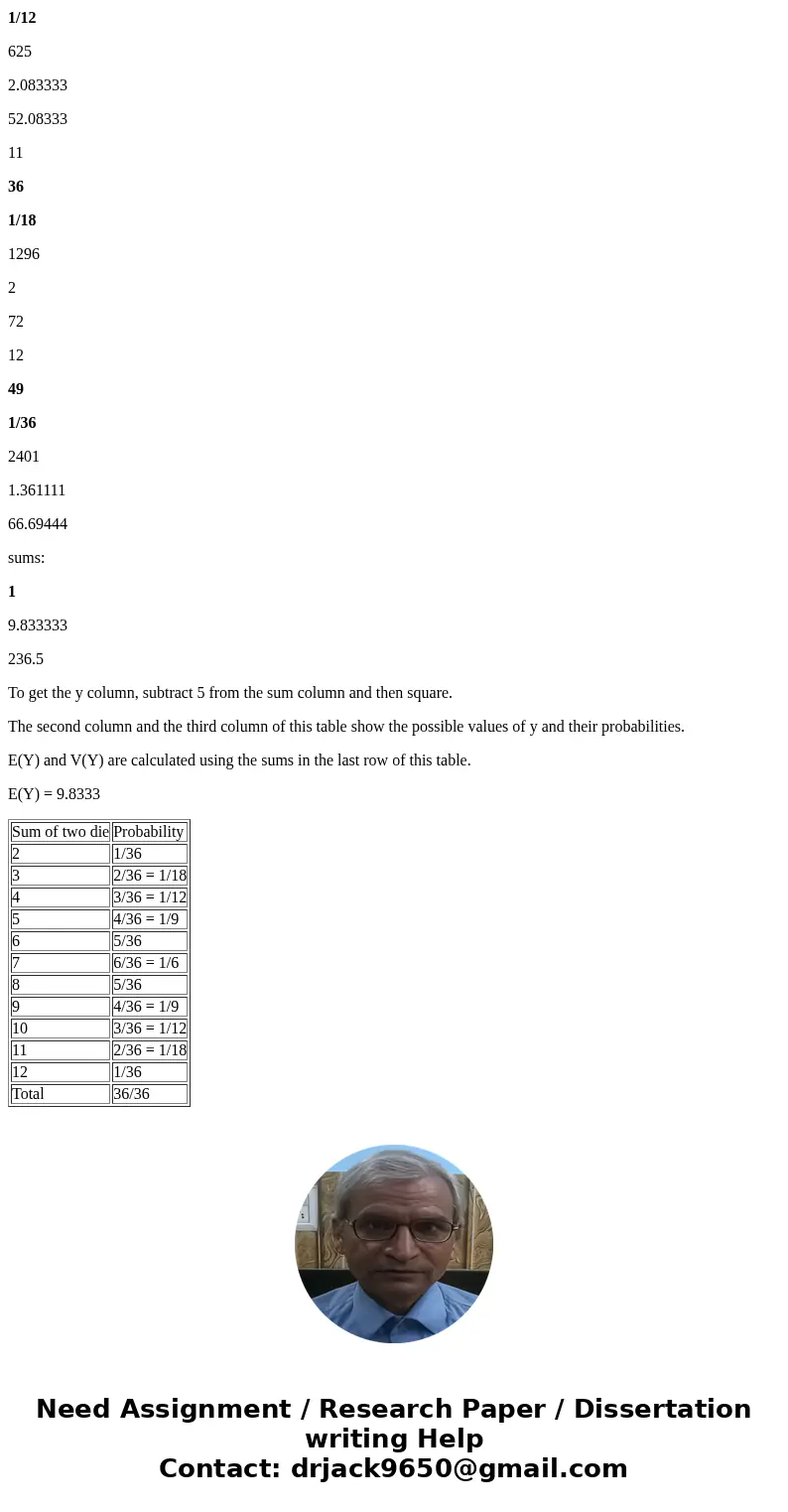Let us roll a die twice The number from the first throw is d
Let us roll a die twice. The number from the first throw is denoted by X1 and the number from the second throw is denoted by X2. Let us define a new variable Y by Y(x1+x2-5)^2.
* Make a table that shows all cases of Y with their probabilities.
* What is the expectation value of Y, i.e. E[Y]?
* Obtain the variance of Y, V[Y].
Solution
Let us roll a die twice. The number from the first throw is denoted by X1 and the number from the second throw is denoted by X2. Let us define a new variable Y by Y(x1+x2-5)^2.
* Make a table that shows all cases of Y with their probabilities.
* What is the expectation value of Y, i.e. E[Y]?
* Obtain the variance of Y, V[Y].
We can use the following:
Sum of two die
Probability
2
1/36
3
2/36 = 1/18
4
3/36 = 1/12
5
4/36 = 1/9
6
5/36
7
6/36 = 1/6
8
5/36
9
4/36 = 1/9
10
3/36 = 1/12
11
2/36 = 1/18
12
1/36
Total
36/36
sum of dice
y
p
y^2
y*p
y^2*p
2
9
1/36
81
0.25
2.25
3
4
1/18
16
0.222222
0.888889
4
1
1/12
1
0.083333
0.083333
5
0
1/9
0
0
0
6
1
5/36
1
0.138889
0.138889
7
4
1/6
16
0.666667
2.666667
8
9
5/36
81
1.25
11.25
9
16
1/9
256
1.777778
28.44444
10
25
1/12
625
2.083333
52.08333
11
36
1/18
1296
2
72
12
49
1/36
2401
1.361111
66.69444
sums:
1
9.833333
236.5
To get the y column, subtract 5 from the sum column and then square.
The second column and the third column of this table show the possible values of y and their probabilities.
E(Y) and V(Y) are calculated using the sums in the last row of this table.
E(Y) = 9.8333
| Sum of two die | Probability |
| 2 | 1/36 |
| 3 | 2/36 = 1/18 |
| 4 | 3/36 = 1/12 |
| 5 | 4/36 = 1/9 |
| 6 | 5/36 |
| 7 | 6/36 = 1/6 |
| 8 | 5/36 |
| 9 | 4/36 = 1/9 |
| 10 | 3/36 = 1/12 |
| 11 | 2/36 = 1/18 |
| 12 | 1/36 |
| Total | 36/36 |




 Homework Sourse
Homework Sourse